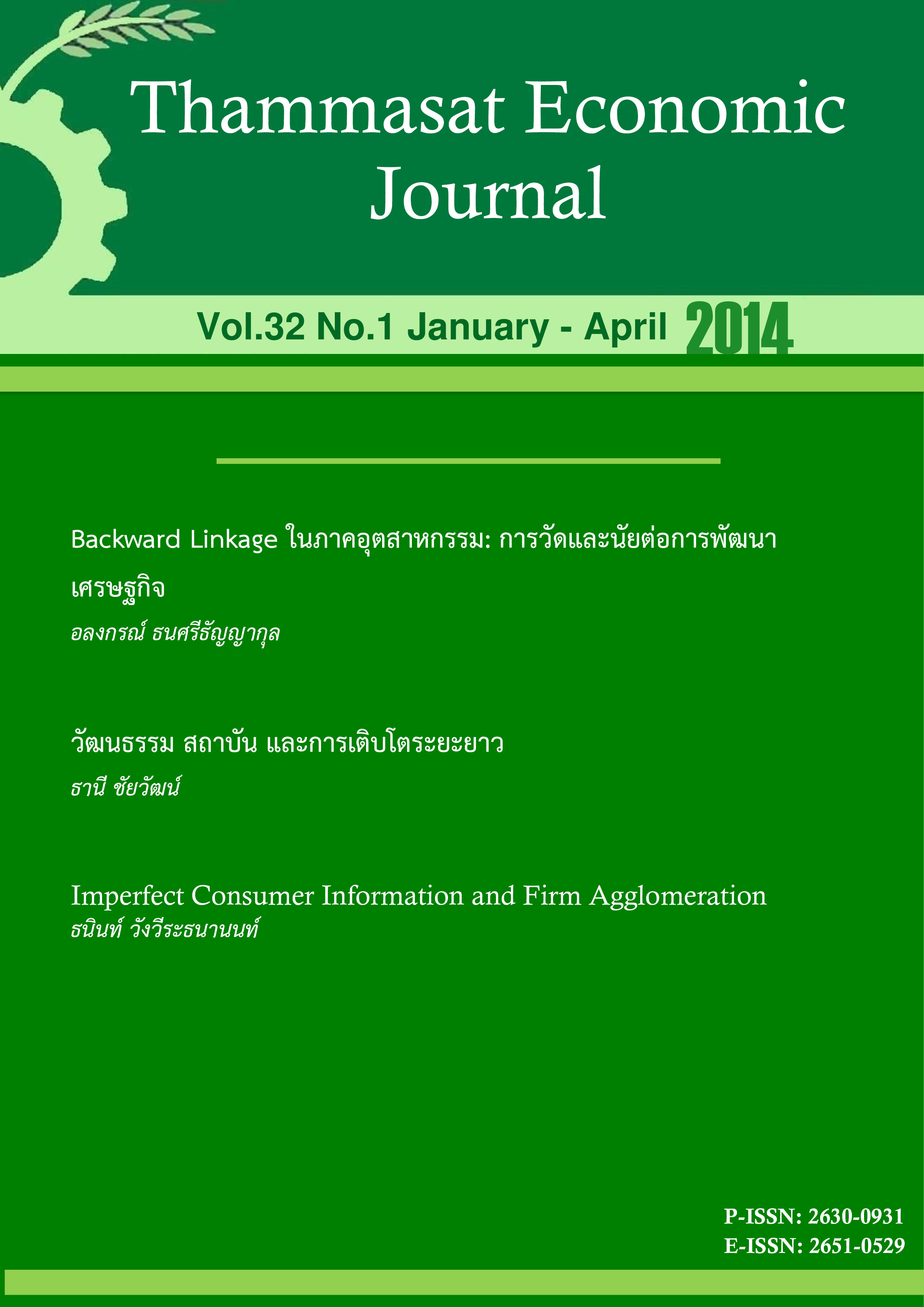Imperfect Consumer Information and Firm Agglomeration
Keywords:
agglomeration, imperfect information, price dispersion, spatial economics, non-cooperative gameAbstract
Conventional microeconomics concludes that firms prefer high demand but low competition. However, in many locations where firms sell a homogeneous product agglomerates are evidenced. When consumers have imperfect information about selling locations and location search is prohibited, each location is identical so they choose a location to visit randomly. When the number of locations increases, the expected demand in each location decreases, creating demand uncertainty in each location. The existence of an active store in a particular location guarantees that it has sufficient demand to sustain business. Anew firm selling a similar product must consider the tradeoff between choosing a location with certain demand but high competition or locations with uncertain demand but possible low competition. This tradeoff is the main study of this paper. If the number of locations exceeds the threshold level, all firms are willing to agglomerate in the location with a certain demand. Otherwise, a location with uncertain demand can coexist with agglomerated location.
References
2.Burdett, K., & Judd, K. L. (1983).Equilibrium price dispersion. Econometrica, 51(4), 955-969.
3.Burdett, K., & Smith, E. (2010).Price distributions and competition. Economics Letters, 106(3), 180-183.
4.Diamond, P. A. (1971). A model of price adjustment. Journal of Economic Theory, 3(2), 156-168.
5.Hotelling, H. (1929). Stability in Competition. Economic Journal, 39(153), 41-57.
6.Janssen, M. C., Moraga-González, J. L., & Wildenbeest, M. R. (2005). Truly costly sequential search and oligopolistic pricing. International Journal of Industrial Organization, 23(5), 451-466.
7.Janssen, M. C., & Moraga-González, J. L. (2004). Strategic pricing, consumer search and the number of firms. The Review of Economic Studies, 71(4), 1089-1118.
8.Krugman, P. (1991). Increasing Returns and Economic Geography. The Journal of Political Economy, 99(3),483-499.
9.Moraga-Gonzalez, J. L., Sandor, Z., & Wildenbeest, M. R. (2010).Non-sequential search equilibrium with search cost heterogeneity (No. D/869). IESE Business School.
10.Stahl, D. O. (1989).Oligopolistic pricing with sequential consumer search. The American Economic Review,79(4), 700-712.
11.Rothschild, Michael and Stiglitz, Joseph E., (1970), Increasing risk: I. A definition, Journal of Economic Theory,2, issue 3, p. 225-243.
12.Stigler, G. J. (1961). The economics of information. The Journal of Political Economy,69(3), 213-225.
13.Takahashi, T. (2013). Agglomeration in a city with choosy consumers under imperfect information. Journal of Urban Economics, 76, 28-42.
14.Weitzman, M. L. (1979). Optimal search for the best alternative. Econometrica, 47(3), 641-654.










